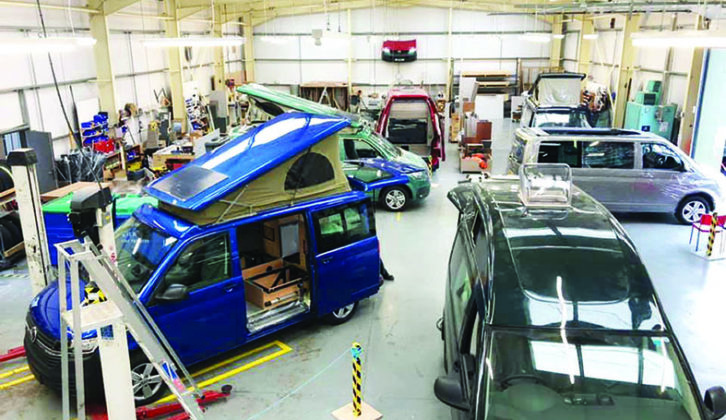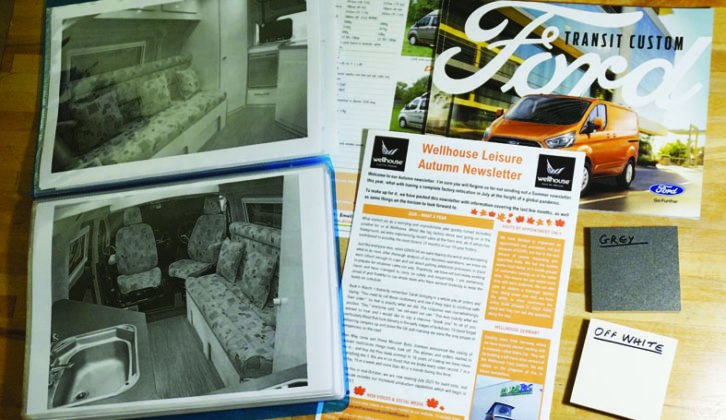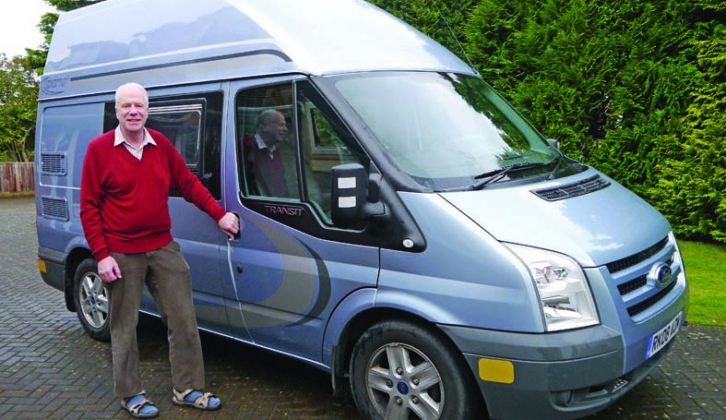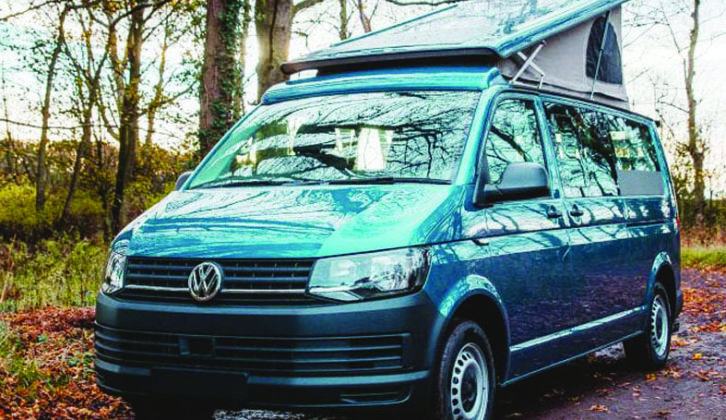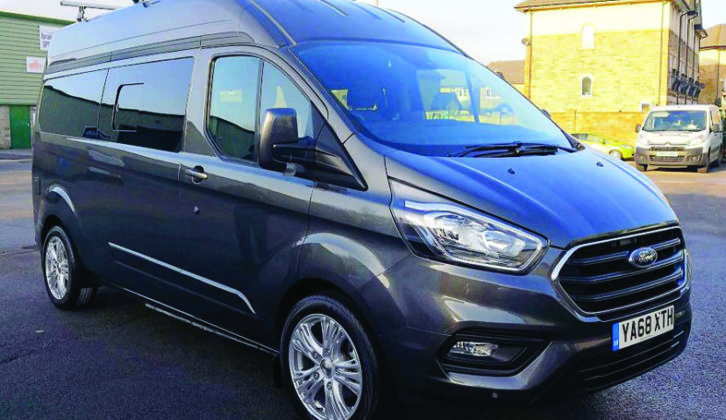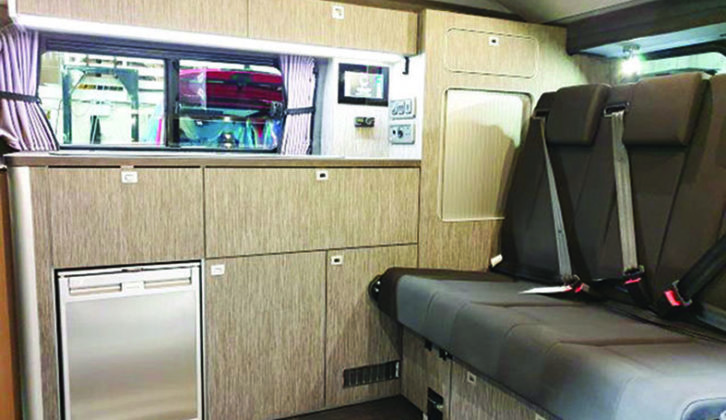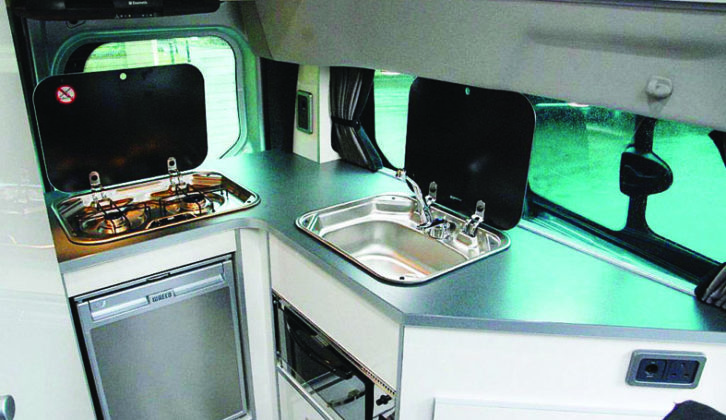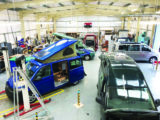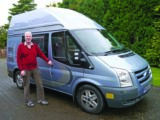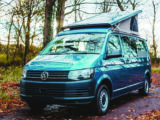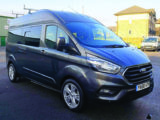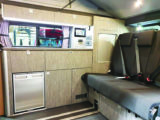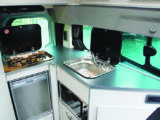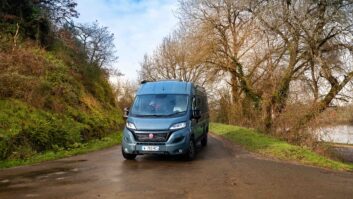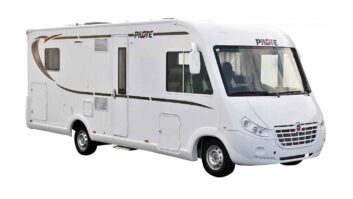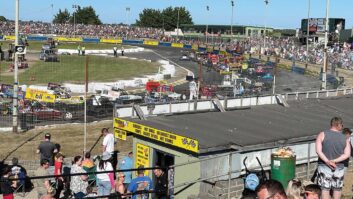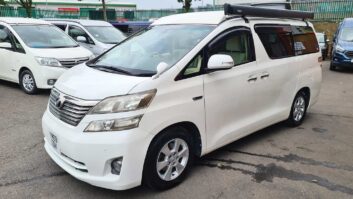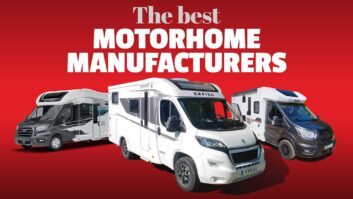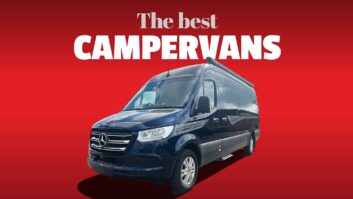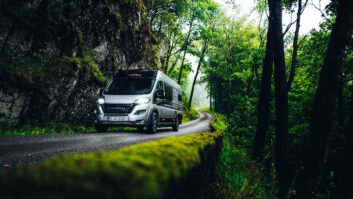Are you thinking of converting to a campervan? It can be confusing to know where to start. After all, how do you choose a new campervan conversion from the substantial numbers of converters out there, never mind the enormous production from the past?
Perhaps you could visit some local dealerships, or stroll around a motor caravan show and buy whatever takes your fancy.
However, for the very best chance of investing your heard-earned cash in a vehicle that will give you years of satisfaction, I would advise starting with a system like ours, which can help you to narrow down your requirements.
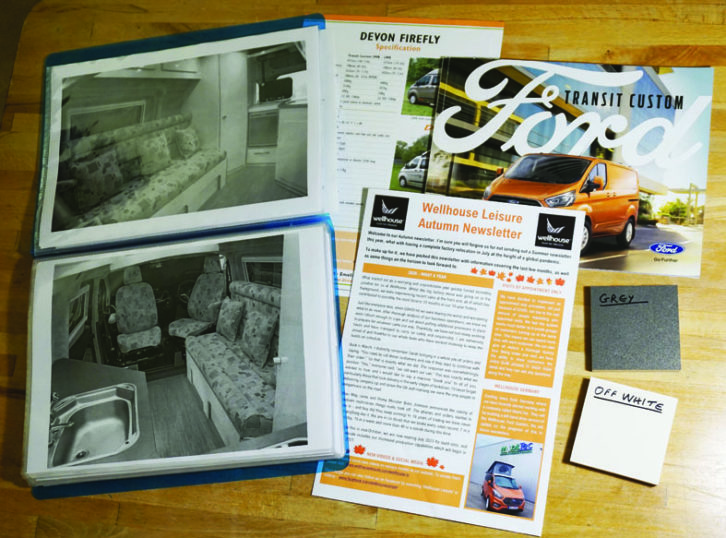
This account follows our own journey through these choices, when we looked for a new van conversion; although many of your decisions will vary, depending on your own needs.
We will assume that you have already decided on a van conversion, rather than a coachbuilt, either because you want it to be compact enough to use as an everyday car or to park in a restricted space on your drive, or because you value the rigidity and weatherproofness of a commercial van base vehicle over a coachbuilt model with a largely caravan type of body.
Selecting the base vehicle for a campervan conversion
Base vehicles start with ‘car-sized’ vans, such as the VW Caddy, Fiat Double, Citroen Berlingo or Ford Transit Connect. This type is becoming increasingly popular, although inevitably, the interior space is quite limited and in many cases, will only provide you with a single bed.
Small ‘campervan-sized’ vehicles, the category that we chose, include the Ford Transit Custom, VW Transporter, Mercedes Vito, Renault Traffic and Citroen Dispatch. With careful planning, this type can provide impact but comprehensive accommodation for two or even four people in an everyday car-sized package.
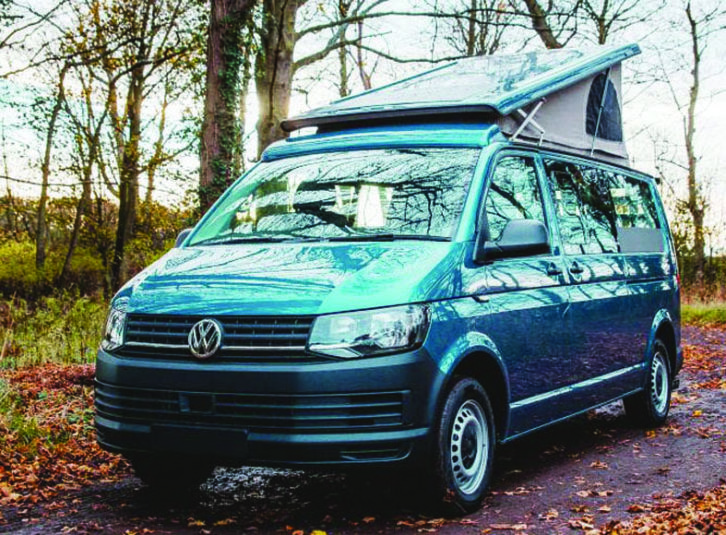
Larger van conversions, based on vehicles such as the full-sized Ford Transit, Fiat Ducato, Renault Master, VW Crafter or Mercedes Sprinter, will likely include full toilet and shower facilities for two to four people, and might be more suitable for longer trips, or to accommodate more camping and leisure equipment.
Many converters will offer a conversion on a lightly used, low-mileage van at a considerable saving in cost, and can often help to source the vehicle for you.
Deciding on length and roof type
Having selected your vehicle, probably after a few test drives, bear in mind that these vans come in two or three different lengths, which will control the kind of layout they can accommodate and how easy they are to park. For us, the key factor was, the shorter the better.
Although it is the most economical, a standard-roof van will not allow standing room, so most people go for a rising-roof, which provides plenty of height while still allowing parking in many height-restricted areas.
This also provides space for a double bed in the roof, which will sleep two children, or in some cases two adults, in addition to the two sleeping downstairs. However, cupboard storage is limited and some complain that touring off-season this way involves cold, damp, flapping, roof canvas.
We chose the van manufacturer’s high-top roof, which in the case of the Ford Transit Custom, allows my wife, Beryl, to stand up easily at 5’4″ tall, but requires me to stoop a little, at 6’2″.
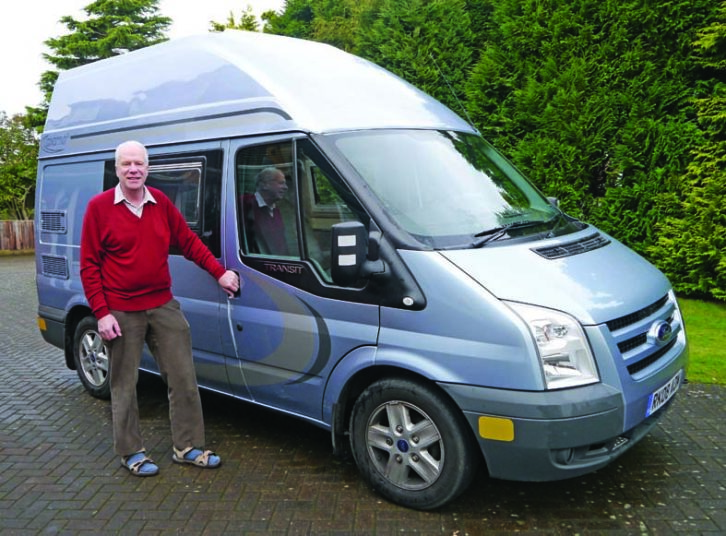
On the other hand, it provides a simple, fully weatherproof solution and includes the extra storage round the high-top.
Different makers have different roof heights, so this needs to be checked in each case. Some allowance, perhaps 30mm, also needs to be made for the minimum thickness of the converter’s floor and ceiling lining.
Campervanners often choose a single tailgate, which offers good protection from rain showers, but is difficult to close from the inside. If, like us, you select a manufacturer’s high-top, you will probably be restricted to barn doors. All of these vans are supplied with a useful sliding door on the GB nearside, but for a small additional cost, your van can be specified with dual sliding doors, which provide greater flexibility when you are driving abroad and a more pleasant environment in hotter weather.
You should note that dual sliding doors will not normally be possible with the popular offside-kitchen layout described below.
Choosing the layout for the campervan conversion
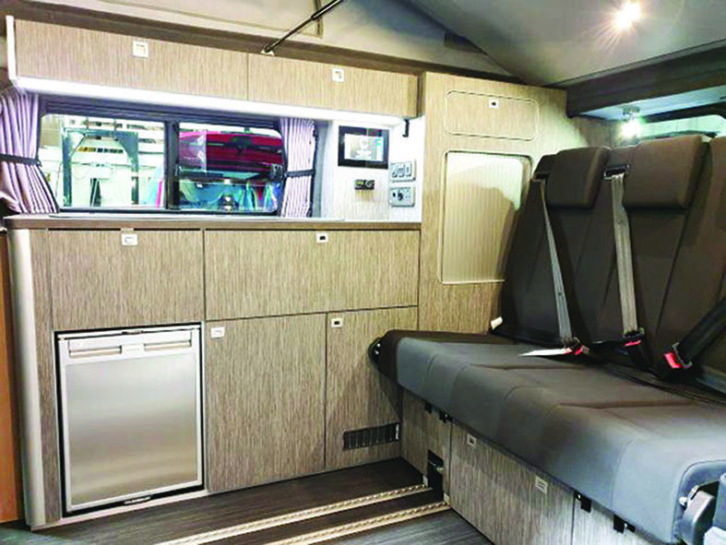
There are two basic designs available to the small campervan convertor, normally based on the VW Transporter, although other base vehicles, including our Ford Transit Custom, can be found with a little perseverance.
By far the most common layout has rotating front seats, a slim kitchen with cupboards down the offside and a double (sometimes triple) travel seat on the nearside.
This seat folds down to form the double bed and in more sophisticated designs, slides backwards and forwards for flexibility. A Porta Potti is often accommodated in one of the floor cupboards.
We chose a rarer layout, with rotating front seats facing two folding rear travel seats, which make up two single beds – in some cases, these will slide together for a double if you wish.
Twin tables between front and rear seats allow comfortable dining for four (we have fed as many as six using one rear seat as a bench).
However, the two single beds or four travel seats give you permanent, unrestricted access from the cab down to the rear doors, which is not available with the offside-kitchen layout.
On the nearside, behind the travel seats, there is space for the kitchen, with a two-burner hob and sink, and on the offside, a single, full-height wardrobe. Behind this, in the rear corner, a fixed cassette toilet (emptied via the rear doors). For us, this was a priority – our final choice included a toilet compartment, which is quite unusual to find in a campervan measuring up to 5.5m.
Finding a campervan converter
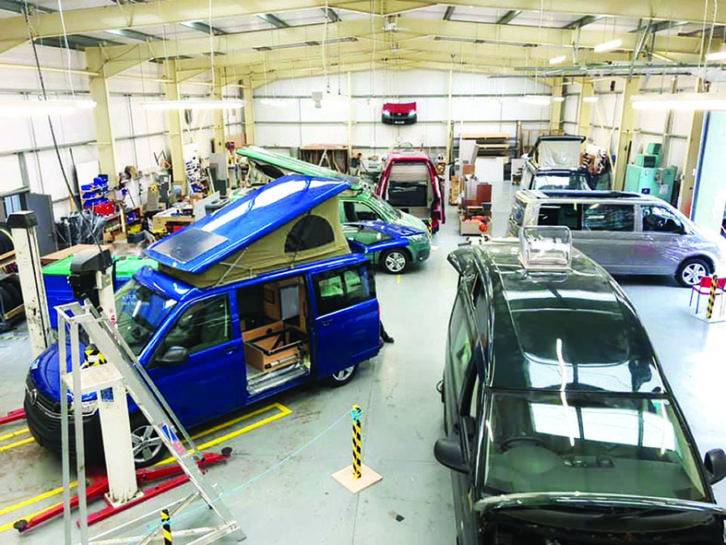
Although we realised we might need a bespoke conversion, we thought it was a good idea to start by looking at converters with a standard model close to what we were seeking. This has the benefit of being able to see what your ‘van will look like, and vastly reducing the discussions needed – you are only seeking to make limited changes to the vehicle that the converter already has experience in producing.
After much internet research, we found about a dozen converters who made standard campers based on our rear kitchen/fixed toilet layout.
We visited six to discuss our needs. In the end, we had a shortlist of two: one very local and the other, Wellhouse Leisure, 90 minutes away.
Here the owner, David, was prepared to adapt his normal two-seat Ford Transit Custom Lux-XL to include four travel seats. The factory tour also showed us the high standard of cabinetwork that went into his conversions.
Selecting your equipment
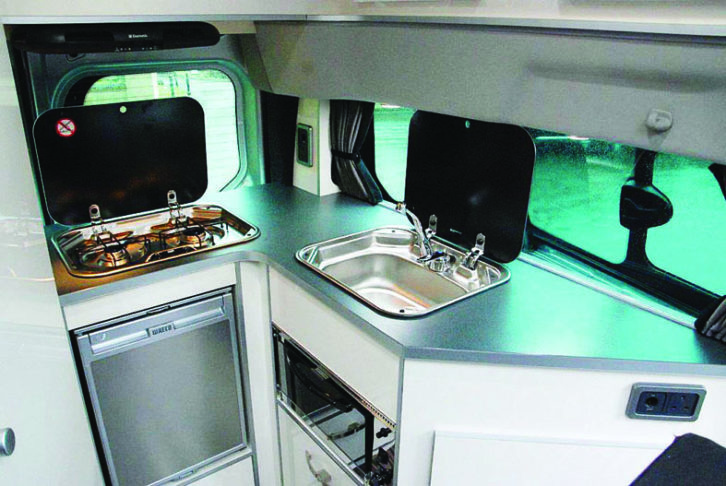
In this size of vehicle, most people would not fit an oven or hot water boiler, but you would need to be pretty hardy to camp off-season, off-grid without a diesel space heater, in spite of the cost.
Mains hook-up is common, although 12V for off-mains power can come from the ‘van battery if you only need low-wattage LED lighting.
A lead/acid battery is more usual and can be supplemented by a solar panel if necessary. The new type of lithium battery generally offers nearly twice the power storage, but at a price.
A wind-out awning can be fitted, but speaking from bitter experience, requires careful weather-watching to avoid the risk of blowing away.
What happened next?
Following our choice of Wellhouse Leisure, we agreed vehicle extras, such as dual sliding doors, sat nav, colour reversing camera, alarms and xenon headlights, on an automatic Ford Transit Custom. David then checked the delivery date, which was well within his June built slot.
The firm’s standard Lux-XL conversion was well-equipped, including diesel heater, solar panel and underfloor water tanks, so we only needed to add a lithium battery upgrade.
At this point, David calculated the cost. Having highly specified both vehicle and conversion, we knew this would add up to a substantial sum, but you can’t expect a Rolls Royce at a Mini price!
If you liked this… READ THESE:
If you’ve enjoyed reading this article, why not get the latest news, reviews and features delivered direct to your door or inbox every month. Take advantage of our brilliant Practical Motorhome magazine SUBSCRIBERS’ OFFER and SIGN UP TO OUR NEWSLETTER for regular weekly updates on all things motorhome related.
In this size of 'van, most people would not fit an oven or hot water boiler, but you need to be pretty hard to camp off-grid, off-season, without a diesel space heater, in spite of the cost
